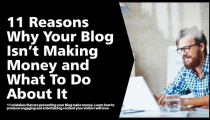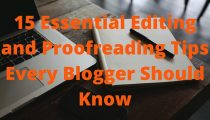
Free Copywriting Course – How To Be A Copywriter
A Free Copywriting Course from IncomeDiary.
At over 12000 words, you may want to download the Free eBook version here.
If you want to write better sales copy…
This free copywriting course is for you.
Perfect for bloggers, entrepreneurs, salespeople, and anyone interested in writing better sales copy.
Even seasoned copywriters will learn new stuff!
How To Be A Copywriter – Free Copywriting Course
A Free Online Copywriting Course From Clive Cable & Barry Dunlop
What do copywriters do?
They sell with words.
Copywriting genius John E. Kennedy said that good advertising is… “Salesmanship in Print“
No longer politically correct terminology, but you get the point!
That is what this free copywriting course will teach you.
How to use words to sell STUFF.
Your stuff, your clients stuff, your company’s stuff!
The words need not be confined to “print”.
Today, the copywriter’s words are used in Webinar Copy, TV, Video Sales Letters, Social Media and Radio.
Some more things you should know about copywriters, before we go in-depth..
- Great copywriters tell great stories. They are consummate storytellers and have an incredible memory.
- The copywriter’s “education” is never complete. They are always learning; they are always observing. Everything that happens to them has copy potential.
- World Class copywriters get paid well. Literally millions of dollars per year. We can’t promise you anything like that, but with the help of this course you are taking the first steps.
- Successful copywriting follows a simple formula. It is about 1) addressing the prospects pain, 2) making it worse [the consequences of not taking action] and 3) then making it better.
Let’s get started!
Download The Free Copywriting Course eBook
This free copywriting course is longer than most articles we publish. For those who prefer to read offline, we are making this course available as a PDF eBOOK
If you want to write believable copy that people love and respond to…
The Ultimate Get-Started Copywriters Guide for copywriters, salespeople, bloggers, and entrepreneurs.
Free Online Copywriting Course | Sell with words | Work from anywhere.
The Philosophy Of Copywriting
Paul Bringe, of “How to Start and Operate a Mail-Order Business” fame says this about being a copywriter.
A great copywriter isn’t in love with words, they are in love with people. All kinds of people, everywhere and anywhere. They are intensely interested in people, watching them closely, listening when they speak, living their bad moments with them and rejoicing in their victories.
The best copywriters are so interested in other people that they forget about themselves, their own needs and wants. After a time they know why others think as they do. And that copywriter recognizes themselves in the other and knows that anything they are capable of doing, good or bad they could do too.
The way to write believable copy is to love people. Know what every living person hates, fears, loves and rejoices in, just as you do. Let everything you write say to your reader, “I understand you, I have been in your shoes, I can help you… please let me try.
We like this explanation. It sums up our thoughts on being a copywriter beautifully.
We also like what David Ogilvy (direct response pioneer) said about advertising and writing copy.
Never Write an Advertisement Which You Wouldn’t Want Your Own Family To Read.
You wouldn’t tell lies to your own wife. Don’t tell them to mine. Do as you would be done by.
If you tell lies about a product, you will be found out—either by the Government, which will prosecute you, or by the consumer, who will punish you by not buying your product a second time.
Again, we could not say it better.
Your skills as a copywriter should only be used for good.
Here are some more thoughts, this time more specifically about writing – from another classic: On Writing Well – by William Zinsser
[W]riting isn’t a skill that some people are born with and others aren’t[.] … Writing is talking to someone else on paper. Anybody who can think clearly can write clearly, about any subject at all.
Zinsser explains that good non-fiction writing (copywriting) is uncluttered thinking. Here’s how he puts it:
Writers must constantly ask: What am I trying to say? Surprisingly often they don’t know. Then they must look at what they have written and ask: have I said it? Is it clear to someone encountering the subject for the first time? If it’s not, some fuzz has worked its way into the machinery. The clear writer is someone clearheaded enough to see this stuff for what it is: fuzz.
On Writing Well is the classic guide to writing nonfiction.
Every copywriter should own it.
-> Here is an excellent summary & notes On Writing Well.
We could go on at some length about the art of copywriting and the “philosophy of copywriting” but this is enough for now.
** New IncomeDiary Feature **
Prompt Engineering: A Guide for Bloggers and Content Creators
Is copywriting hard to learn? | How can I learn copywriting?
These are two questions we get asked a lot.
Most people would have you believe that copywriting is hard.
You’ll hear that from copywriters so they can charge you a small fortune in fees.
Those fees are worth it if
a) you can afford them.
and
b) the copy works and brings you in four times the cost you shelled out.
Writing copy is easy when you keep the goal in mind, and you have a few tricks up your sleeve.
Here are our most commonly used writing strategies.
Use them to quickly and easily write good sales copy that persuades your buyers.
We also get asked: Can I learn copywriting for free?
This free copywriters course will answer that question!
Our Formula For Copywriting Success!
We have an easy to remember formula or mnemonic for creating sales copy. Use this formula for your copywriting success…
P.R.E.M.I.E.R. (as in Better Than The Best)
Prime your mind. Read other promotions that are recent winners in your niche.
Research. This includes interviewing existing customers, online research (see Google Hacks below). Plus digging up original ideas from history, books and YouTube.
Empathy Map. Get inside your prospects world.
Match and mirror. Use advanced rapport strategies to bond with your reader.
Involve. When you get your prospect involved in your copy they’ll have an invested interest in buying from you.
Excite. Get your prospect excited about their new life when the take up your offer.
Reason. Give your prospect an “intellectual alibi” for buying on impulse. The more reasons you can come up with for buying, the more sales you’ll make and the less refunds you’ll receive.
The Thought Police.
There’s a part of your brain–the limbic system–which is not time oriented, nor object-oriented.
What this means is – it can’t tell the difference between itself and others and has no concept of past, present, or future.
That timeless, object-less part of your brain receives what you’re giving because it doesn’t know whether it’s going out or coming in.
If you care for and give to another person, their brain can’t tell whether it’s you doing it to them or if they’re doing it to themselves. The brain always receives what it gives.
That’s both good and bad news.
The bad news is if you deceive other people with intent to trick them then you’ll get the same things happen to you.
The good news is if you do what we will be showing you here, you will receive great things in your life.
This is a little tricky to explain, but we would like to introduce you to the concept of ‘deception without deceit.’
How is that possible?
There is a bit of a cult classic among copywriters and in the know entrepreneurs called: Thick Face, Black Heart. [If you can find a copy – buy it]
In it, the author: Chin-Ning Chu introduces the concept of ‘deception without deceit.’
Rather than go into a rambling explanation of what this means, we would like to ask you a question.
Have you ever “misrepresented” yourself to do good?
Perhaps, when starting a romantic relationship?
When you first begin dating you always present the best of yourself.
At first you hide your faults and failings, and the other person doesn’t mind if they are falling in love with you.
That’s deception without deceit.
You aren’t tricking anyone. You’re just showing yourself in your best light.
And that’s the same with sales copy, you put your product in the best light and no one minds, especially if they fall in love with your product as soon as they begin using it.
Thick Face, Black Heart also introduces us to the concepts of: “The advantage of playing the fool” and “Winning through negative thinking“.
All in all, one of the best underground business books you likely have never heard off.
And despite the “dark” title, this book is about being honorable and doing the right thing.
In short…
It’s okay for people not to know a strategy you’re using, if it helps them create a better future.
Because they need not know.
People will be glad you have the necessary skill to help them take the right choices. Choices that ensure they’ll get more of the good things they are looking for.
What motivates people to do what they do and why.
The Science Behind Copywriting [Ethical Persuasion]
In life there are four dominant motivators or drivers:
Getting the things we want – Learning new things – Having great relationships – Keeping what we have.
Let’s look at these in order.
#1 The need to acquire
We all love to get new things. We are a nation of consumers well trained by advertising of all kinds.
#2 The need to learn
We love to learn about the things that interest us. The news is a massive business worldwide. It’s constantly bombarding us with things we didn’t even know that we didn’t want to know.
#3 The need to make connections (The need to bond)
#4 The need to protect ourselves
Copywriting 101 – The Four Drivers of Human Behavior
~ how it impacts your copywriting ~
Let’s look at these four dominant motivators – so you understand of how people are persuaded.
The first core motivation is to DEFEND ourselves from harm, trickery, or deceit.
The second is to BOND with other people. We love to belong to groups, families and clubs.
The third is the fact we like to LEARN about new things and how they can improve our life.
Then and only then do we look to the fourth core motivation – ACQUIRE. When we buy anything it is usually to improve our life. To enrich our life. This is why your prospect will buy from you.
As you can see from above image – DEFEND is at the center of the four core motivations. This is because if we perceive any kind of threat, we want to defend ourselves.
Defense is contracting inwards and growth is expanding outwards.
When we contract inwards, it’s a stress reaction that triggers our fight-or-flight mechanism.
When this happens to someone you’re trying to persuade, it’s because of something you said or did.
Usually this will manifest in a lack of rapport. This needs to be fixed, before you can both move forward in the persuasion process.
Understand that when a person reacts this way, they are trying to PROTECT themselves from con-artists and the like.
As a copywriter, you must show integrity before you begin the persuasion process.
Honesty shows through.
These days, most people are good at spotting lies and seeing through deceivers.
Honesty is the one characteristic that sets you [the professional copywriter] apart from the con artists who lie for a living.
Did you know a politician is the only person who can tell a lie and prove it? That’s the trouble with politics today and the public sees through it.
Understand that in this instance, DEFEND and PROTECT are the same thing.
In reality, you will get some resistance, even if you’re impeccably honest. And resistance causes the buyer to defend / protect their position.
From the perspective of the person reading your copy, persuasion starts when they no longer see a reason to defend themselves.
Once that happens, they want to bond with you and the copy you have written.
Once bonded, their next step is to learn about what you offer and see if it fits with their mental construct of what they desire. If it does, they will want to acquire it.
But the person you’re persuading must let down their defenses first.
For them to do that they have to have questions answered.
These questions will come in the form of objections.
They put up resistance based on what has happened to them in the past.
Or to put it another way, if someone has been burned in the past, then there will always be objections below the surface. Objections that will rise up and become dominant the longer you do not address them.
To succeed in copywriting, you must…
Enter the conversation that’s going on in your prospects head
You need to know the exact words and phrases your ideal customers are using to describe their problems and goals…
…and then use those words in your copy.
You must understand your ideal customers pain.
You must be able to define their fears, desires, pains, temperament, and goals as well or better than they can.
Forums, Amazon reviews (look at both the 1 star and 5 star reviews), customer feedback forms, and YouTube comments are great places for finding out how your customer is thinking.
Before you begin to write any sales copy, first do your research and answer these questions from the readers (prospects) point of view…
-
- I hate ___________________
- I don’t like having to ______________________
- Having to ________________________________ frustrates me.”
- Why is it like this ___________________________?
- Do I have to _______________________________?
- I wish there was a way to ____________________
- I’m tired of _______________________________
- Having to do ______________________________ is a pain in the…”
As you answer these questions there is one more question you should ask:
What do your buyers dream about? [knowing the answer to that question will allow you to write better copy]
You can’t ask the above questions too often.
Repeat this process every time you want to write something new.
Everyone is holding a mental conversation with themselves.
They burden their thoughts with what concerns them.
Their worries. Their interests. Their problems. Their goals.
You must enter this conversation with something that fits in with those thoughts.
3 Google Hacks For Smart Copywriters
Understanding the needs and worries of your prospect is essential.
You cannot write convincing copy with out it.
Step up your copywriting game; use these 3 Google Searches to discover the in-depth information only an expert would know.
1) Use the search modifier “inurl:forum”
This shows you only URLs (links) that have the word “forum”.
For example if you wanted forums where people discuss “tiny homes” you would use this:
inurl:forum tiny homes (example)
2) Type in Google [keyword] + horror/nightmare stories (example)
3) Type in Google [keyword] + market demographics/facts
These searches will provide a wealth of information that you can use in your sales copy. It will also help establish you as the EXPERT!
One more thing…
As your reader reads your copy there will be another conversation going on in their head that goes something like this…
Can I trust these people?
I bought a product like this before and it didn’t work.
And similar thoughts.
Or it could be that their attention has wandered off somewhere else.
Attention spans are short.
Even the best sales copy does not hold a prospect’s attention 100% of the time.
You cannot ignore these thoughts.
You must SPEAK to them and get their ATTENTION back.
How do you do that?
You get their attention back by using a “pattern interrupt.”
Pattern Interrupts are a Neuro Linguistic Programming (NLP) technique designed to break the expected pattern of thoughts or behaviors.
To tackle doubts about your product, take your reader back to their previous concerns and show them how what you do fits in with those concerns.
Show them how your solution helps them achieve their goals and overcome their problems.
If the issue is boredom or just plain mind-wandering – break the pattern by adding testimonials, images, sidebars, call-outs etc, that get your reader’s attention back to your words.
This would be a boring piece of writing if we did not include images and headlines to keep your attention.
Successful Copywriters Think About Things Differently
Why people don’t buy
People don’t buy because you haven’t gotten past their defenses.
Resistance is your worst enemy. To get past any kind of resistance you must first:
- Get your prospects to believe there is a conflict
- Get them to believe that their conflict needs to be resolved
- Get them to realise their conflict needs to be resolved sooner rather than later
- Get them to buy into the concept that they need a solution
- Get them to realise that they need your superior solution. They need to see it as the best one to resolve their conflict and they need to get it right now! Oh yes, and to perceive the price as more than fair.
Sales Resistance can only come up if:
- You’ve allowed them to believe there is no real conflict
- You’ve allowed them to think it’s not an urgent conflict
- You’ve allowed them to think there isn’t a solution
- You’ve allowed them to think your solution isn’t the best one
- You’ve allowed them to think you’re not the best person to deal with
Here are some typical examples of buyer resistance:
1) “I don’t believe you.”
This is an unanswered question that can also be phrased like this:
“Will I be able to…?”
There’s something we would like to introduce called “A Preponderance of Proof.”
(Meaning greater in weight, amount, or number.)
Essentially, you pile on the proof whenever and wherever you can.
Gold is precious because of its limited supply. Proof is precious because it is hard to manufacture.
Your goal is to make it easy for your prospects to say YES and difficult for them to say NO.
You add more weight to your sales copy by using…
- Credibility (number of users, success stories)
- Track Record
- Unique Mechanism
- Believability
- Displays of Knowledge
- Personal Endorsement (Used by industry leaders, celebrities, etc)
- Case Histories
- The Sinatra Test (“if you can make it here, you can make it anywhere”)
- Facts.
- Research.
- Social Proof.
- Media Mentions.
- Number of Followers.
- Subscribers maybe?
- Facebook fan page?
- Do you specialise in any niche?
The Power of Using Testimonials in Copywriting
A great strategy is to have other people tell your prospect how easy it was to get the results you’re promising them. They are more likely to believe what others say – meaning they make up their minds much quicker.
Make it easy for your buyers to provide testimonials. Create a form on your website where readers can supply testimonials.
Notes:
- Give people an opportunity to attach a photo of themselves (a personal photo with a testimonial is more powerful)
- Ask questions that encourage (directs) the reader to give the reply you want. For example: What was your biggest fear before purchasing our product? Did it come true, and if not, what happened instead?
- Two other questions that often get great answers are: What, specifically, was your favorite part of our product, and why? AND If you were to recommend this product to your best friend, what would you say?
Remember – it is better to let your clients do your bragging for you (People love case studies)
Something else to keep this in mind:
People may believe what you tell them… they may. But they will always believe what they themselves conclude.
If other’s say you’re great, your prospect begins to connect the dots.
More Examples Of Buyer Resistance
“I’ve never heard of you.”
You need ‘credibility proof’ here.
Show beyond any shadow of doubt that you can be trusted to perform, or that your product does what it “says on the tin.”
And here is another example of buyer resistance.
“I can do this later… what’s the hurry?” and, “My situation isn’t that bad.”
In this case, you haven’t intensified the conflict enough.
Show the reader where it leads them if they carry on like this and do nothing about their situation.
Problems don’t go away by themselves.
Take money worries as an example.
Do they just go away? Are there lots of people winning the lottery?
No.
Poverty consciousness sets in after a while and becomes a habit.
So does prosperity consciousness. Especially when you see money coming in every day, every week and increasing every month.
The contrast principle works best here.
Show the reader the logical conclusion of doing nothing about their situation.
Then show the opposite.
It’s like the before and after scene you see in weight loss adverts. You know the ones with the oversized trousers on a skinny person.
The contrast principle works because it shows the cost of not taking action. In the case of continuing to be overweight, that could mean health issues and not being around to support your family.
Or in a business example, it could be the hard cash they are loosing (or not benefiting from) if they don’t take action today.
To add more weight to your persuasion argument, show how your method is unique. (No one else can do this for them)
Show a new way to solve their problems that is better than what they are doing already.
If a prospect says to you, “I don’t believe you” you have a credibility issue which you can fix in one of two ways.
Have a testimonial about your company and its products.
And the other lesser known method, but even more valuable, is to have a personal testimonial about you, your character and your integrity.
Here are more questions that will get you believable testimonials:
- What did you like most about the product/service?
- What were your perceptions before we started?
- How have those perceptions changed?
- What were your three biggest benefits?
- Would you recommend our product/service?
- Is there anything else you’d like to add?
The resistance you often get in the marketplace is in the form of these words.
“It’s not going to work,” or its sister objection, “It will not work for me.”
This is always a symptom of low self-esteem.
If you sell information or you’re a coach or a consultant, then the best way to answer this is to offer three levels of proof.
- prove that your method works
- Prove you’ve taught others
- Prove you’ve taught others who are not as smart as your prospect.
This ties in with other types of resistance like:
I don’t believe you and I don’t need you.
One is about you proving what you say, while the other is saying” I can do it myself.”
Once you learn to get past resistance, you have a marketing asset you can use to make money whenever you need to.
You need to come up with a list of twenty objections.
And then you need to answer all of them.
It’s a bit like playing chess. Your opponent plays a certain move or sequence, unless you know how to counter it, you’ll most likely lose.
With your twenty objections written up, you brainstorm possible answers. We’ve given you a few here, but you must do the work.
Sales Resistance Examples:
Assuming you are selling an event (either live, in person or online) here is a list of resistance statements you may hear.
- I can’t afford it
- It costs too much
- It won’t work – it’s all hype
- It won’t work for me
- I can’t make the day you have your meetings
- I don’t like live events
- I’m too shy to attend
- I don’t have the time
- My situation isn’t that bad
- I can wait
- It’s not a solution I like
- I’m not in selling
- It’s too complicated
- it doesn’t fit my personality style
- I don’t know you
- I don’t believe you
- I don’t believe you can teach me
- What I do doesn’t involve selling
- I can use good marketing instead
- I’m satisfied with my level of income right now
LOSS or GAIN – Which Is The Bigger Motivator?
It has been said that “people want to get out of hell more than they want to go to heaven”
People are more motivated by the “fear of loss” than the “desire to gain”.
Loss causes pain (sometimes physical, but more often psychological).
People will do anything and everything to eliminate or reduce that pain.
Fear of loss and pain are powerful motivators.
However, the “desire to gain” has less urgency.
As long as we can survive and most of our needs are met, there is little (emotional) motivation to gain more than one already has.
The status quo doesn’t require extra expenditure of energy.
One can simply enjoy “surviving.”
Knowing and understanding this separates the average copywriter from the exceptional copywriter.
People fear the loss of money, status, respect etc.
But just as importantly…
They are afraid of being left out or left behind. [FOMO – Fear Of Missing Out!]
They are afraid of making bad decisions (haunted by bad purchases in the past).
Your job as a copywriter is to help them with these fears.
Victor Schwab – the man whose work promoting Dale Carnegie’s “How to Win Friends and Influence People” made it a best-seller, had a list of 40 key emotional drivers that all humans respond to. It is still as valid today.
Related Post: Emotional words that will hook your readers.
Here are a few of them…
• Health (greater strength, vigor, endurance, the possibility of longer life)
• Time
• Money (for spending, saving, or giving to others)
• Popularity (through a more attractive personality or through personal accomplishments)
• Improved appearance (beauty, style, better physical build, cleanliness)
• Security in old age (independence, provision for age or adversity)
• Praise from others (for one’s intelligence, knowledge, appearance, or other evidence of superiority)
• Comfort (ease, luxury, self-indulgence, convenience)
• Leisure (for travel, hobbies, rest, play, self development, etc)
• Pride of accomplishment (overcoming obstacles and competition, desire to “do things well”)
• Business advancement (better job, success, ‘be your own boss’, reward for merit
The Best Way To Overcome Any Objection
Anticipate it first!
Spend time with the list of objections you have come up with and then use the empathy map to understand even more about what is going on in the mind of your potential client.
Our Process For Writing New Copy
Get an A2 artist’s sketch pad and some colored stick it notes.
Draw The Empathy Map on a page in the pad.
Then ask questions.
Lots of questions!
If it is your own product, imagine your potential prospect. What are their hopes, dreams and worries?
What do they think? What do they say? What do they do? What do they feel?
If you are selling a client’s product, brainstorm with your client.
Ask questions. Get to know their ideal client.
Again, what are their dreams, hopes and worries?
Better still, do market research and build an AVATAR for your/their ideal customer.
Answer each question on ONE stick-it note at a time.
We recommend using just one color stick-it note per section.
When you have lots of answers – at least 20 – you will have a ‘map’ of your client’s mind.
Now you will have ideas for writing persuasive messages.
Time To Write Copy And Test Your Assumptions.
The last exercise is great to help you understand your future client, but you may want to go one step further.
Why?
Because the research you’re about to do will make your writing easier. You’ll never have to worry about getting writer’s block. (when a writer loses the ability to produce new work or experiences a creative slowdown)
Usually writer’s block comes down to little or no research. A technique to get over it, is to start a new paragraph that starts with “It seems to me that…” (this will kick-start your creative juices)
Here are some diagnostic questions you can use.
For this next exercise you will act like a consultant or doctor would.
You ask questions in a certain order and then make a recommendation.
Yes, this sounds simple, that’s because it is.
The key thing to remember is not to rush this part. Act as if you have all the time in the world.
Now for the questions:
What’s your biggest difficulty with …?
[there are two answers people give to their problems when asked this way. One is a flippant answer, and the other is the real answer. To get to the real answer, ask this question five times. “and what else.”]
What are some of the problems that (blank) is causing?
You want to know how this problem is affecting their life.
[These are the things they don’t even admit to themselves]
What is the ideal result you would like to achieve? (the best outcome)
[once again you will probably get a superficial answer at first, so ask, what else?].
What would having that result do for you? (listen carefully here.)
What other things would you get once you get the result you mentioned?
What’s important about that to you?
Create a document with these answers and label it “Diagnostic.”
Once you’ve done the Empathy Map and created the diagnostic document, you’re ready to begin writing.
Let’s start with the headline.
Creating Headlines That Get Results
First lets look at an example of one of the most successful headlines of all time.
John Caples wrote this Ad to sell a piano correspondence course. This type of Ad is known as a revenge advert. Typically, these types of headlines are used by copywriters on cold traffic or prospects that don’t yet know the company, and are not aware they have a problem until they read the Ad.
You will see variations of the above Ad used today. John Caples even used this approach to sell a language course.
When we read news sources, we’re scanning the headlines for anything that interests us.
That’ why copywriters spend so much time on headlines. They know how the mind works, and they also know that attention is as rare as frog’s feathers.
We now live in the attention age and getting people’s attention is harder than ever. It’s said that those who get attention make the most money.
In this section we’ll explore only two ways of getting attention.
You need an attention-getting headline that solves a problem or fulfills a desire.
If you like, you can use the words ‘How to…’ to begin with.
One to avoid pain, the other to get pleasure.
How to (avoid…) _______________________________________________
And how to (get…) _____________________________________________
Take a separate piece of paper and write at least 10 of each. That way you’ll come up with a couple of strong attention grabbers for your advert, article, blog post or web page.
You will have noticed by now that we have asked you to come up with 10 or 20 alternatives. (not 2 or 3 alternatives)
This is the bit most rookie copywriters won’t do. They think of one or two options, even several, but they don’t persevere. Don’t be a rookie – whoever told you being a (copy)writer was easy was lying.
It takes hard-work and serious graft to succeed as a copywriter. Sure, in time it will become easier as you create your own formulas for copywriting success – but until then avoid the shortcuts and do the work.
You are working for your reader and potential customer. Your efforts now will make it easier for them to say yes to your offer and start benefiting from your product. Your work improves their quality of life.
Now create a document and put your headline ideas in there and call it “headlines.”
Do this before reading on because the fundamental difference between the successful and the unsuccessful copywriter is the speed at which they put in place new ideas.
Related: 10 Blog Headline Examples That Got Us 10 Million Readers
And if you are like us and get inspiration from old adverts, check out this AD for a famous Car Brand that inspired this Ad. (Please see our Bonus at the end of this post – for more “swipe-worthy” ideas)
Plus this Ad – is one of the best direct response ads of all time!
And for some additional sales copy inspiration, check this letter that John Steinbeck wrote to Marilyn Monroe. A wonderful (sales) letter from the literary genius who gave us “The Grapes Of Wrath.”
Crafting Compelling Sales Copy – What To Do Next
Ben Feldman has gone down in history as being the world’s greatest salesman. He was the first person to sell life insurance policies with a face value of more than one billion dollars. This was in the 70s and 80s when a billion dollars was a lot of money. [and still is!]
We like this explanation of what a Billion Dollars is!
Our favorite Ben Feldman quote is:
Problems have price tags.
It is a remarkable fact, but fewer people will buy something to prevent pain. (to avoid a problem)
Most people will buy something to get out of pain. (to fix a problem)
Your aim in copywriting is not to create desire alone, but to fan the flames of desire to such a degree, that they become hot to buy.
NLP master, Wyatt Woodsmall explains it this way…
If you can articulate their problem better than they can, they automatically believe you have the solution.
What we’re getting at here is that pressing problems need to be solved fast.
And your sales copy provides that solution.
While they are reading your words, the prospect should think themselves, I am glad I found this!
We build successful sales copy around the 4 C’s.
-> the conflict (the readers problems)
-> the claim (how your product will solve their problem)
-> convince or credibility
-> the close.
As you write, expand the conflict (the problem) – make the conflict bigger.
Focus on the effects this conflict will have on the quality of their lives.
Elaborate of your solution to their problem (Your Claim) – making it as convincing and powerful as possible. (add credibility to your claim)
If you do all three in the sales copy, the natural conclusion will be that they buy your product.
How do you intensify the conflict and how do you make the claim more powerful?
The conflict can either be a problem that has not been solved or a goal that has not been achieved.
To make the conflict bigger, the first step is to explore the implications of the conflict. In other words, how does having this conflict impact their lives?
The brilliant copywriter Clayton Makepeace had one main closing strategy.
Put them at a crossroads!
He would tell them what it would be like if they didn’t take action right now. He paints such a negative picture in his reader’s mind, it would almost make them shudder.
Then he would tell them what life would look like when they choose his option.
And he would paint an amazing future that was almost impossible to resist.
If you think this is hard work – you’re right.
It’s even harder if you don’t know any of this.
How do you intensify the conflict and how do you make the claim more powerful?
Let them connect the dots.
The first question is – where else does this problem impact them?
Let’s say your goal is to create a successful, profitable business and right now it is struggling to take off.
Because of this…
- You can’t quit the job you hate.
- You can’t take your family on expensive holidays.
- You are a slave to your current boss etc.
These are the dots you need to help them connect.
If you brainstormed with your client or with yourself using the Empathy MAP, then this should be easier.
Where else does it affect them?
What does the conflict prevent them from doing?
Once again, it could be quitting their job. It stops them buying their dream house or prevents them from taking time off as they please. (No extravagant holidays)
What else won’t they achieve until it’s solved?
In the above business example – it could be they won’t achieve financial independence.
They will lose the respect of their peer group.
And that will affect their self-esteem!
There is more…
How does it affect those that they love?
As a copywriter you’re taking them through the implications of how this conflict affects their lives.
Note: There is a natural human tendency to downplay the conflicts in our lives so we can function.
As a copywriter, your job is to expand on the conflict and the implications in such away that it becomes necessary for the reader to do something about it!
Remember: People Buy Solutions
Another example…
Let’s say that a husband and father is 70 pounds overweight.
What impact will that have on his family?
He could get diabetes and have to rely on his family as his health condition gets worse.
He can’t play with his grandchildren anymore.
He will need to take medication for a heart condition.
Can you see where we’re going with this?
How does time affect the conflict?
Does the conflict get worse over time? (if you don’t lose that weight, what is going to happen in a years’ time? 5 years? 10 years?)
Will losing weight more difficult to achieve or to solve as time goes on? (Of course, it will!)
What other opportunities are passing them by because they haven’t achieved that goal or resolved that problem?
How does the conflict impact their enjoyment of life?
Is it a grind? Is it a painful existence? Describe it!
What we’re looking for here, is any angle you can leverage – to show your prospect it’s necessary to take action right now.
And solve the conflict by using your product or service.
Our example weight loss advert above is from the late great Gary Halbert – who wrote some of the best converting weight loss adverts of all time. You can see the complete advert here. Note in particular the sub-headline that reads: I Couldn’t Even Get Out Of Bed And My Doctor Said I Was Going To Die.
As a professional copywriter, it is your job to connect the dots for your prospects. To show them the implications of not resolving the issue / problem / conflict.
Amplify the PAIN of not taking action today!
The better you’re at conveying that message, the more anxious your prospects will be to find a solution.
So how do you go about doing that?
Ask yourself what is the ideal outcome your product or service provides?
Once you know that, you can ask what’s missing from your prospects life because they don’t have what you are offering.
- How is their life made worse when they don’t have that?
- How is their life more of a struggle when they don’t have that, etc.?
Now it is time to amplify your claim.
Lets stick with the business example.
If they put in place your solution, what will be the benefit to their business?
How much better of will they be in 3 months? 6 months? a year?
Let’s say that they will be $200,000 better of. Then, legitimately you could we say it is costing them $200,000 right now to not put in place your service or solution?
You are amplifying the necessity for taking action right now!
You will have heard this before…
Stories SELL!
Or as we like to put it, Drama Sells!
Keeping with the business theme and using the classic example above as a template, we could create a “story” around
“…nobody took him seriously until his business took off”
Right now with an unsuccessful business, no one wants to know him or take him seriously, but once he becomes successful everyone wants to know him!
You can dramatize the claim or its result. For example…
I used to suffer with “..x..” but now that my business is thriving, I get to go on vacation, take time off when I want…
You can also tie authority into your claim…
the business training program that more venture capitalists recommend or require.
You can show a before and after the claim.
“I went from struggling to make a living online to being the proud owner of a thriving business”.
The claim is only limited by your ability to make it believable.
These are the things you can do that will double, triple or even quadruple your sales. The quality of your writing and communication determines whether you’re treated as an authority and someone they can trust to help them with their “conflict”.
That is why we are doing all this research and asking all these questions.
When this is done correctly, everything else becomes easy.
And when this is done incorrectly, it becomes incredibly difficult.
Now, create a document for your claims and proof and call it “claims and proof.”
We’re moving from getting past the readers defenses. We are now bonding with them and they are learning how you can help them in order for them to BUY what you’re offering.
To quote Eugene Schwartz…
(you’re) altering your prospect’s vision of reality. It creates a new world for your prospect – a world in which your product emerges as the fulfillment of the dominate desire that causes them to respond to your headline.
To make that happen you’re going to rewrite what you’ve written to make it conform with the way people like to learn.
This is important…
The Four Learning Styles
All writing is formulaic.
This formula I’m introducing you to is called 4-MAT.
It’s based on the four learning styles that Harvard Professor David Colb introduced a few years ago.
People learn in one of four different ways.
They are:
- The ‘Why’ Learners (Why does this matter to me?)
- The ‘What’ Learners (Explain the concept. What is it?)
- The ‘How’ Learners (Hands on learning)
- The ‘What If’ learners (Will this work for them?)
WHY
The Why learning style wants to know why they are learning this. (is it relevant to me?)
It is the motivational style. They need to understand the why so they can see a reason to learn this. What is the outcome? What pain will they suffer if they don’t learn? What will they gain if they do learn? This is an emotional learning style that comes from the heart.
WHAT
The what learning style is concerned mainly about the theory, the data.
They come from the head, and are concerned with the logic, the ideas, concepts theories, history, and the science behind it all.
HOW
The how learning style wants action steps in order to learn.
They love the exercises at the end of the chapter in the book. These people are happy with recipes, step-by-step instructions. They are ‘hands on’ people who want to get on with it.
WHAT IF
The “what if” learning style is the typical entrepreneur. They want to know, how do I take all this and go and put it into action so I can get some results in the real world.
How do I put the pieces of the puzzle together?
How can I manifest what I want?
The writing formula in order of importance.
When you structure or re-write what you have written, always talk about the why first.
Why they need to learn this and what they will get or avoid.
Next talk about the theory, the science or concept behind your product.
After you’ve done that, talk about how your product or service works.
Give a demonstration in writing.
The last part is to mention what would happen if they owned or consumed your product.
Talk about the changes in their lives.
You can go to the past and explain possible causes of their problem. Then go to the present, what is happening to them right now.
After that you talk about what will happen if they don’t take the action you want them to take. Lastly, tell them how much better off they will be with your product.
When the right words come, people don’t see them, they feel them.
How to write copy that will influence the four different learning styles
Now it is time to take what you’ve learned and put it into action in the real world.
Here’s example copy that will appeal to a WHY learner.
- If you learn and use the techniques I’m about to show you, you’ll avoid ___________.
- Here’s how this applies to you:
- And if you learn and use the techniques I’m about to show you, you’ll get _____________.
- Here’s what you’re going to get if you take what I’m about to teach you and use it:
- “Here are a few interesting statistics that will help you [GET RESULT]…”
- “The general rule that applies here when you want to [GET RESULT] is…”
- “When scientists researched this, here’s what they found that helped people [GET RESULT]…”
- “Here’s the history and story of how this amazing technique was discovered…”
IMPORTANT: The WHY Learner (also known as The Imaginative Learner)
- Perceives information in a concrete way
- Processes information by reflecting
- Is constantly asking themselves “what’s in it for me?”
- Has a vivid imagination
- Aims for harmonious relationships
- Needs to be fully engaged and involved in the learning process
- Is people focused and very respectful of different cultures
- Loves self-development and growth and they assume all their audience do too
- Likes to consider themselves very real, transparent and authentic
Here’s example copy that will appeal to a HOW learner.
- Here are the 3 action steps to solve _____________ and get ______________:
- Here’s what to do RIGHT NOW to make sure that you [GET RESULT]…
- Here’s what to look for when you use this material.
IMPORTANT: The HOW Learner (also known as the Common-sense Learner)
- Perceives information in an abstract way
- Processes information by doing
- Takes the theory and turn it into a practical application
- Takes complicated theories and turn them into practical, common sense instructions
- Is pragmatic in their approach
- HOW learners are quite laid back in their approach but don’t underestimate their need to be challenged. They love to solve problems.
- HOW learners hate ‘fluff’ and ‘waffle’! They want information presented to them without all the bells and whistles!
- You will often find HOW learners tinkering with gadgets, whether that be new technologies, new phone, TV etc. They learn by doing. HOW learners are the ones that never read manuals, they jump right in and only when something doesn’t work do they resort to reading the manual!
- Can be a bit bossy and often have a low attention span.
Writing Copy for the WHAT learner.
Now it’s time to create a separate piece for the ‘what’ learning style. Here you concentrate on proving what you have works.
Give this document a title like, ‘The Research Behind…’
What you are doing here is appealing to the rational mind of the reader. They want evidence, statistics, hard, cold facts.
It’s okay to use some jargon here if you explain it. You don’t want to leave your reader feeling stupid. No one buys if we make them to feel foolish.
Use prominent names if you can. People with credentials, like a doctor, or a scientist. Do your own research on the internet if you need to.
If you say something in this document, it had better be true, in fact everything you say must be true. All you are doing is assembling your information to tell the truth attractively.
This may take you a day or two, but it’s worth it. When your reader sees this, they will have what they need to convince themselves what you have is what they want.
This should be no longer than two sides of an A4 sheet. Use color paper for this. We recommend pale blue. Blue is a color associated with reliability.
Start with “why they should read this.”
For example, here is the research that backs up everything I’ve said so far.
Then go into the ‘what’ of your research. The history, the concepts behind it, plus any data or statistics you can put in. Then give an example of how it works. Then you talk about what if everyone (with x problem) could have this in their lives.
Show how the world could be a better place if this were in the lives of those who need it.
When you’re finished with this the next document is even easier to create.
IMPORTANT: The WHAT Learner (also known as the Analytical Learner):
- Perceives information in an abstract way
- Processes information by reflecting
- Is very conceptual and forms opinions based on theory and what they know
- Credibility is very important to them, and they need to know what the experts think
- Often has an internal frame of reference and is deep in their thinking
- Requires the detail, not the summary
- Is constantly evaluating what is said and acquiring newfound knowledge
- Loves a traditional classroom setting – table and chairs in theater style
- Can be quite detached (thinking rather than networking). They are not as outgoing and sociable as the WHY learners
- Struggles with subjectivity, they’d prefer a more definitive approach.
Writing copy for the WHAT IF learner
How to we appeal to the WHAT IF learning style?
Show them what their life will look like when they buy your product.
Paint a picture in their mind of how green the grass is on the other side.
Copywriter Craig Clemens is a master at this.
He suggests you use this strategy.
Say who it’s for and who it’s not for.
Here’s our take on this.
When you describe who it’s not for, show them a successful person who has the result you’re selling.
Plant an irresistible image of the new world they enjoy by saying…
“You don’t need this if you’re already experiencing (insert powerful results.)”
Who needs this?
Here you describe someone who is desperately struggling to over come a problem they’ve had for a long time.
Keep in mind, the “what if” learner wants you to remove most of the risks and show a desirable future.
IMPORTANT: The WHAT IF Learner (also known as the Dynamic Learner)
- Perceives information in a sensate/concrete way
- Processes information by taking action
- Learns by trial and error
- Is very excited about a new idea and about things in general
- Loves change and get bored if things stay the same for too long
- Tend to have a natural ability to recognize opportunities
- Is usually a great leader and natural entrepreneur
- Don’t need to be constantly re-invent the wheel. They’re happy to pick up a model that’s already working and customize it to work for them too
- People often call them pushy and manipulative – they have a way of getting what they want!
How To Use Social Proof In Your Sales Copy
Robert Cialdini is acclaimed world-wide for his book ‘Influence’. The book lists six major triggers that cause people to be influenced plus three minor triggers.
We are just going to focus on one of those triggers here – the one he called ‘social proof.’
Remember you need credibility and social proof before you can be trusted. We are focusing here on getting people to like, trust, respect and want to buy from you.
One of the best forms of social proof is Testimonials.
If you say something, people may doubt it, but if others say it, they believe it.
Testimonials should be short, one or two lines only. They focus only on the benefits gained or problem solved.
You can use before and after testimonials but not everyone should say the before and after story.
Mix them up, that way they are more interesting to your reader.
You want the full name, not A. N. Other London. Also, add the city or town, like Las Vegas, NV.
Again, this should be no more than two sides of one A4 sheet of paper. We have tested pale yellow for this sheet, and it seems that’s what works best.
Earlier, we gave you a formula for getting great testimonials.
If you can, get a photo of the person giving you the testimonials.
Now create a document and put all your testimonials in there and call it “Product Testimonials.”
Here is an example testimonial from our portfolio of testimonials…

The issues are complex, but Clive handled the audience well, especially the kind of – legitimate – objections where the techniques do not necessarily work with the existing client base or image that the customer requires. His in-depth understanding really shone. I am re-building our website currently and I shall certainly be utilizing some of Clive’s concepts and look forward to working with him again in the future. I strongly recommend him.
James Sale – Best-selling Author of Mapping Motivation
The “Buddy on a bar stool” Technique
(or the ‘friend in a coffee shop” technique)
Speak to your prospect in the same tone and style as you would with a friend.
In a conversational style.
Imagine you’re in a bar talking to a friend who has confided in you about a problem they have and you are giving them advice about what they should do to solve their problem.
This is the tone and approach that the best copywriters use.
Take A Rest – It Makes You A Better Copywriter
You have been busy. You have done a lot of research and asked a lot of questions.
You have a lot of ideas and you can almost see the final sales copy!
However it is time to leave this copy with your subconscious a little while.
Perhaps go for a walk, do some exercise or meditate.
You may be surprised by what other flashes of inspiration and ideas you get.
How long should you take a break for?
Anything between one hour and a whole day we suggest.
Copywriters are a “funny lot”.
Many are quite introverted, eccentric and not easy to get on with. (not us though!)
Some find their best work is done early mornings, others late at night.
Some can work for several hours straight – once they are in the zone!
Others prefer shorter time spans of writing.
The important thing is to do what works best for you.
Copywriting Expert Craig Clemens — recommends the 33 minutes on, 6 minutes off technique
33 minutes are spent writing and 6 minutes are spent resting. For extra points, doing something physical like push-ups or sit-ups. No WiFi. Have your phone in airplane mode for those 33 minute sessions.
This video explains more…
Check Your Sales Copy For Readability and Grammatical Errors.
Most copywriters (us included) never envisaged being (copy)writers and have ended up in this profession more by “lucky accident” than intent. Indeed some of the best copywriters we know will admit their grasp of English and Grammar is average at best.
Fortunately there is help in the form of online writing tools. We list three of them here.
No 1 Hemingway App
This app highlights lengthy, complex sentences and common errors. It will make you a better copywriter! Best of all it is FREE.
The Hemingway App grades your writing. The lower the grade, the easier it will be to read and understand (Aim for under 8). We try to never go above 6.
According to Readable.com – there is an 83% increase in the number of people who will finish reading your content if its readability is improved from grade 12 to grade 5.
Winston Churchill said that we should “use simple words everyone knows, then everyone will understand.” Simple advice – but alas not something that is always remembered. Using the Hemingway app will help you with that.
The master wordsmith Eugene Schwartz put it this way…
Words in advertising are like windows in a store. You must be able to look right through them and see the product. If you see the window it’s dirty, or you’re going to see yourself, or you’ll see the smear. You’re not going to see the product and you’re going to lose.
Think of complicated and “clever” words as smears on your writing. Avoid using them!
No 2 Do a Flesch-Kincaid Readability Test
Many word processor programs include this feature. You will need to find and enable the Flesch-Kincaid scales. They’re usually a part of the Spelling and Grammar checker. Find out how to enable in Microsoft Word Here.
No 3 ProWritingAid
This is a great App for quickly checking the quality of our own writing and that of external copywriters.
Their free plan, which covers basic writing corrections, works well for new copywriters starting out.
The Free Copywriting Course | Call to Action Concept
Now comes the most important part of your job.
Making the right offer.
It’s been said many times that there are three factors that make a great marketing campaign great.
They are (in order of importance),
- The offer.
- The person you are selling to.
- The copy.
We’ve spent a great deal of time understanding who you are writing to and what their problem is.
Then we looked at some practical copywriting ideas, now it’s time to turn our attention to the offer.
Creating Magical Offers – How To Deliver a Compelling Offer
Here are some questions to help you create your magical offer.
- What is the core desire that your prospect has that your product satisfies?
- What is the core problem that your product solves for your prospect?
- What bonuses can you add or create that will further meet the core desire or solve the core problem?
- How can you phrase the guarantee so that your prospect feels you’ve completely removed the risk?
- What about your product or service will get your prospect the most excited about using it?
- Take the prospect into the future in their mind. What events are going to happen because of something about the product or service that you sold them?
- Make the biggest promise you can make. (it’s best to make a promise that scares you, because you have to put your “game face” on.)
- Talk about the subsidiary benefits. The way an aspect of your prospect’s life will change because of that big promise.
- Describe the way your prospect will experience life as a result of these benefits.
- Add bonuses and describe them in terms of how they fulfill core desires (see note on bonus below)
- Add your guarantee. (and name your guarantee.)
- Summarize the offer and spell out what tangible things the prospect going to get. What are the components, the information, the service? What are they?
Answering the above questions will create incredible copy. But there is one other essential ingredient you will need before you start.
We call that the BIG PROMISE!
How will their life be better, once they have your product or service?
Incorporate the BIG PROMISE in your Headline and Sub-Headlines.
Every compelling offer needs a BONUS
Something that makes your readers even more eager to buy what you are selling
Something to sweeten the deal!
It is not unheard of for people to buy a product because of the bonus offered!
The rule of thumb on bonuses is…
If you are selling information (how to products), give away a product that enhances the information.
If you sell a physical product or service, give away information that helps them get the most out of your product.
Don’t rush your bonus offer.
Think it through and come up with something unique and inviting.
Now it is time to create a document that has the answers to the above questions and call it “My offer.”
Now the time has come to review all your documents and “stitch them together” and create the final sales offer
Free Copywriting Course | Putting it all together.
Now the time has come to review all your documents and “stitch them together” and create the final sales offer
Now that you have most of your ideas in documents, copy and paste them all in one place. Call this new document: “Influencing my reader.”
Because you’ll want it to look like you’ve sat down and written your final sales offer all in one go, you’ll want a special type of connector word.
Here are some phrases and words that make your sales copy flow and keep people reading.
- again
- and
- besides
- finally
- furthermore
- however
- incidentally
- likewise
- meanwhile
- nevertheless
- plus
- still
- therefore
- above all
- after all
- all things considered
- as a result
- aside from
- by and large
- by the same token
- by the way
- first of all
- for example
- for instance
- for one thing
- for the most part
- for this reason
- generally speaking
- in addition
- in conclusion
- in other words
- in short
- in the final analysis
- in the first place
- in the long run
- on the other hand
- other than that
- that is
- to begin with
- to put it differently
These are all “connector” words that link one phrase to another.
Eugene Schwartz said this about writing copy…
Copy is not written, if anyone tells you – you write copy, sneer at them. Copy is not written, it is assembled.
You do not write copy; you assemble it. You are working with a series of building blocks and you are putting the building blocks together and you are putting them in certain structures.
You are building a little city of desire for your person to come and live in.
As a copywriter, you assemble words and the final result looks like you have sat down and written it spontaneously.
That’s the real magic of copywriting.
Here are some more transition words to help your copy flow.
- That means…
- And check this out…
- One more thing, it’s important…
- It gets even better…
- Do you understand what this means?
- What does this mean for you?
- How would you like to see it for yourself?
- So, what’s next?
- But get this… And, of course…
- Can you imagine that?
- And another thing…
- Okay, so what? Here’s what…
- Know this…
- Think about it…
- Know what this task?
- Here’s why it works…
- The bottom line though is this…
- But on the other hand…
Remember, your copy should read like you’ve sat down and wrote it in one go.
It must also be conversational.
Pay close attention to the words per sentence. There should be no more than 14.
And lines per paragraph, again there should be no more than three.
Next look at where it shows passive versus active sentences. If it’s more than 5 per cent, you’ve been talking too passively and probably about the past.
We will tell you what to do about these in just a second.
Right now, we want you to put your copy through both the Hemingway App and ProWriting Aid.
What needs fixing?
What can you do to make your sales copy easier to follow and understand?
Aim for a readability score of 8 or below. (some of the most successful copywriters write at a Grade 6 or below level)
Doing this may take a while but once you’re done, you will have something that’s easy to read.
Something that will convince people to buy from you.
Free Copywriting Course | Time To Reflect | Final Thoughts
Congratulations on getting this far.
Many people want to become great copywriters, but few are prepared to put in the effort required.
You have made a good start and you already know a lot more than most about creating convincing sales copy.
Now we want you to do something that may surprise you.
We want you to read this again. If you have not already done so – download a PDF Version.
Why read again?
Because you will pick up things the second or third time you read, that you didn’t pick up on the first time.
This is human nature. Please don’t skip this part. One more idea or insight could make the difference between an average conversion rate and an exceptional conversion rate.
As we said at the beginning, successful copywriters never finish their education.
We know many copywriters (ourselves included) who have undertaken the same training course several times or read the same copywriting book multiple times!
Do you want to be a successful copywriter – that is the question?
We will finish as you should finish any sales letter – by reviewing all that we have included in this free copywriting course.
You have discovered the four human drivers that motivate almost anyone.
- The need to defend.
- The need to bond.
- The need to learn.
- The need to acquire.
You learned about conflict and why it’s important to use it in your copy to get past their resistance and help them solve their problem.
You have also found out about the preponderance of proof necessary to convince a skeptical mind.
Then you learned about the objections people have and what you must do to counter them.
There was the concept of “the empathy map” that allows you to look inside your prospects mind.
Plus, the interview questions to ask to get further insights.
Next, you discovered a simple way to write headlines that grab attention.
Then there was an in-depth study of the four learning styles.
By now you know which one you are and the ones you’ve never considered until now.
Next it was the importance of getting testimonials and ways to encourage more of them.
Then of course there is the OFFER and THE CALL TO ACTION.
We also discussed one of our favorite techniques – the use of transition words.
The words and phases that make it look like you just sat down and wrote the whole piece in one go.
As we said, good copy is assembled and not written.
Plus the all important readability scores and why they are so important.
Now you know how to write copy that converts and could easily double your sales.
And while this is the best method to increase profits and make more money, it’s not for everyone.
Indeed, this method may be dangerous for certain types of people.
That’s because there are those who don’t have a direct sales background.
It takes a finely tuned sales brain to write great sales copy. Without that sales edge – the odds are stacked against you. Frankly, you could lose your shirt!
If you don’t have sales experience and you would like some help, here’s what you should do instead:
Hire a copywriter who has a history of success in commission only sales.
That way, you’re guaranteed to get great results – and create an online business that keeps you in a luxurious lifestyle you CAN afford.
We admit we are biased.
We are salespeople – first and foremost.
But then so are all great copywriters!
Look at almost every successful online entrepreneur and you will find a great copywriter by their side.
Are you ready to join us?
Connect with Barry & Clive today.
Remember…
The distance between you and everything you want is your words.
~ Clive Cable
Or perhaps more accurately, your copywriters words!
To Your Copywriting Success.
Barry Dunlop & Clive Cable
Free Copywriting Course Bonus 1: Swipe Like An Artist
We mentioned the importance of having a good bonus earlier. So here is the “Better Than The Best Free Copywriting Course Ever BONUS”.
“good artists copy, great artists steal”
This quote has been attributed to Steve Jobs and Pablo Picasso, among others.
But what exactly does it mean?
In short…
When an artist copies something, it’s understood that they are not the originator. They did not create the picture; they copied it!
However, a great artist can take a small part of something, make it their own, and turn it into something new.
Is that stealing? We don’t think so.
It is said that Picasso took ideas from African Artists – especially their abstract approach to form.
He “stole” those ideas, and many of the ideas showed up in his paintings.
We can say the same for copywriters – (word artists!)
Except in copywriting you don’t steal – you SWIPE!
Hang around copywriters long enough and you will frequently hear them refer to their “Swipe File”.
Consider the print ads we referred to above.
All those Ads have inspired other Ads.
While originality is a good thing and will be the backbone of your work, realise it is OK to be inspired by successful advertising that has gone before you.
You need not reinvent the wheel, every time you write.
Our favorite site for swipe-worthy copy is swiped.co
SWIPED.CO provide an excellent analysis of what some consider “The Greatest Sales Letter of All Time.”
It sold $2 billion worth of Wall St. Journal subscriptions & ran from 1975 to 2003 with only minor edits.
Martin Conroy, who wrote this Ad is considered one of the greatest copywriters of all time because of the success of this Ad.
However there is firm evidence suggesting the narrative of the letter was swiped from older ads.
Interestingly, some suggest that Agora Publishing – used the Wall Street Ad as inspiration for one of their publications.
See the swiped.co comparison of the two Ads here.
Two more things about the Wall St. Journal Ad…
1) Despite what we say about the power of Headlines, this Ad did not have a prominent headline. Remember there are exceptions to just about every “rule”.
The question is, can you work out why it succeeded despite the lack of a strong headline?
2) And here is a useful one page dissection of The Wall Street Journal Ad and why it worked.
-> The Psychology Behind The Story That Generated Over 2 Billion In Sales
If you are a REDDIT user you will find plenty of SWIPE inspiration – Here and Here (two of our favorite places to find swipe-worthy ideas!)
Free Copywriting Course Bonus 2: The Amazon Also Bought Technique
Most of you will have seen the “Amazon Also Bought Technique”. The one were they recommend other products to go along with what you purchased.
This “technique” is not unique to Amazon – good salespeople use this approach with every sale.
“you have just bought a shirt – so you will need this lovely tie to go with it!”
The “Customers Who Bought Items in Your Order Also Bought” approach is one all good copywriters use.
Sometimes in follow-up emails.
Often with “up-sells” to the original order.
We are using it right here to deliver more value to this copywriting course…
Readers who enjoyed swiped.co also enjoyed Good Landing Pages and Really Good Emails.
Free Copywriting Course Bonus 3: More Swipe Examples From History
#1: The American Express Sales Letter
Earlier, we mentioned the Wall St. Journal subscription sales letter – and how it is the greatest sales letter of all time. It is good. No one can argue with the results.
But there is another sales letter that some argue has done even better.

The American Express Sales Letter – arguably, the most effective letter of introduction to the world of travel, entertainment, and the good life ever written. The letter was mailed between 1976 and 1988 and can claim to be another Billion Dollar Sales Letter.
The winning sales copy has inspired many copycats. That is why so many copywriters have this letter in their swipe file!
“Quite frankly, the American Express® Card is not for everyone” equals copywriting magic!
#2: The letter John Steinbeck (author) wrote to Marilyn Monroe (actress) in 1955
Some would not immediately consider this a sales letter, but that is what it is. If you write copy for a charity or political donations, this letter should be in your swipe file.
With copy like: “one foot in the door of puberty” and “pensive girlish mood,” – what is there not to like!
By the way, in 2016, Steinbeck’s message fetched $3,520 at Julien’s Auctions. (Estimate: $300 – $500). It may have sold for more if the auctioneers had targeted copywriters as potential buyers!
Finally – a counter intuitive thought:
Take time to be bored. One time I heard a coworker say, “When I get busy, I get stupid.
~ Austin Kleon
Steal Like an Artist: 10 Things Nobody Told You About Being Creative
5 Best Books On Copywriting – 5 Surprising Books Every Copywriter Should Own
Free Copywriting Course – Author Bios:


Related:
How To Be A Better Copywriter – The Carrot and the Stick
How To Create Product Personality
10 Reasons Why Your Email Marketing Conversion Rate Sucks!


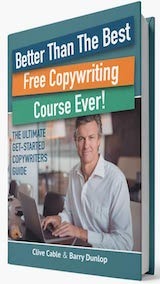

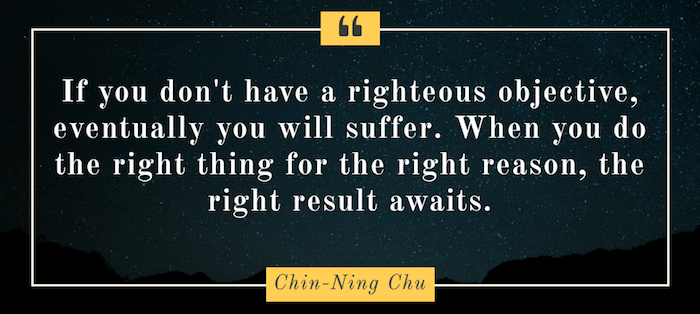
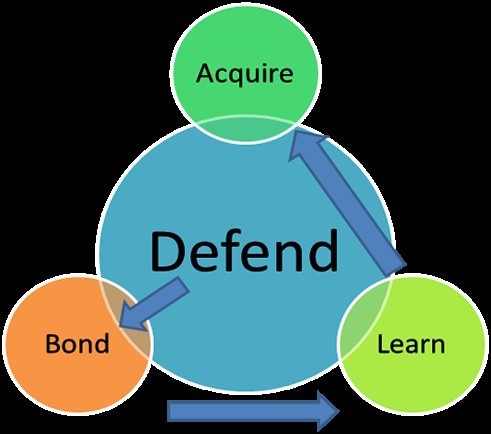
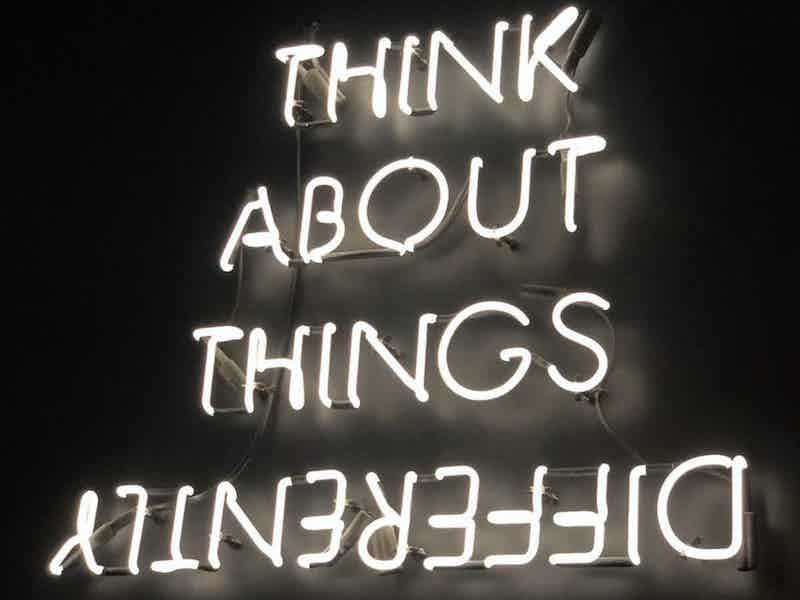
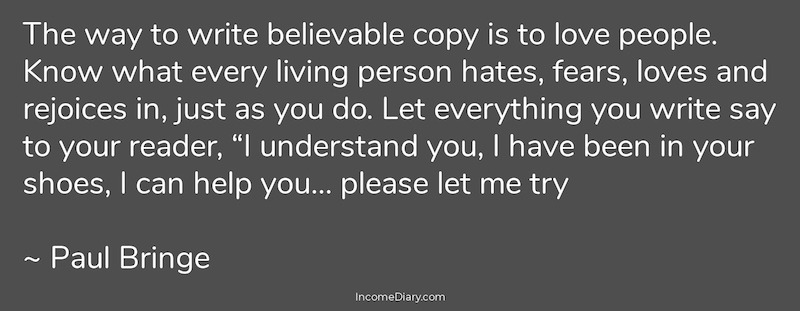

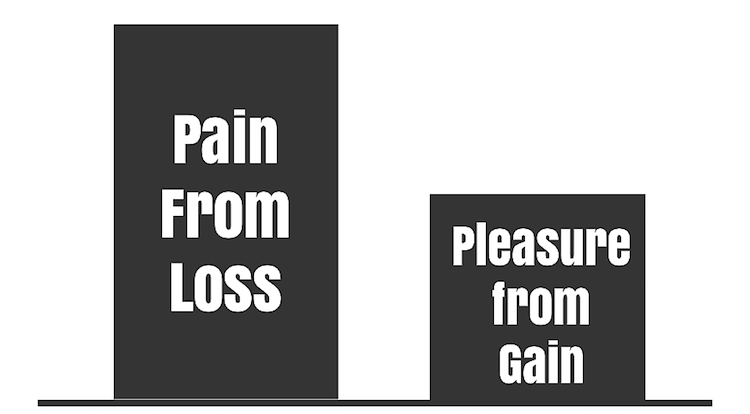
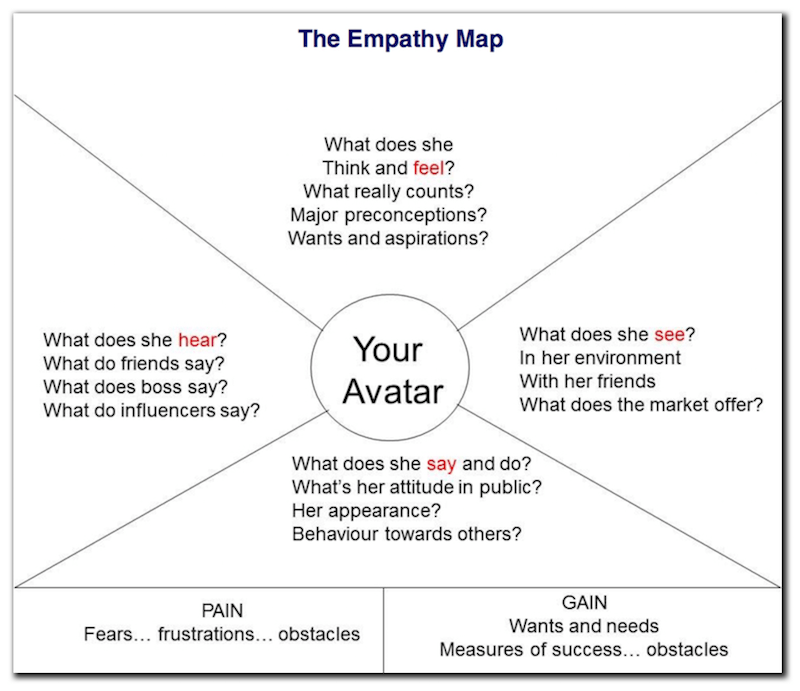
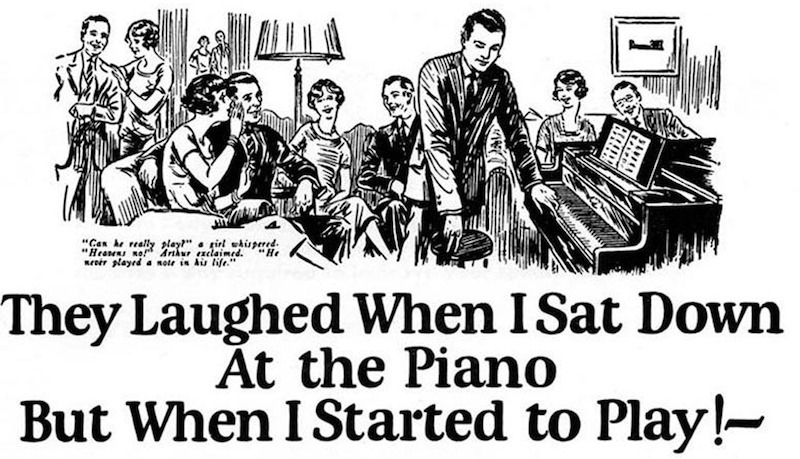
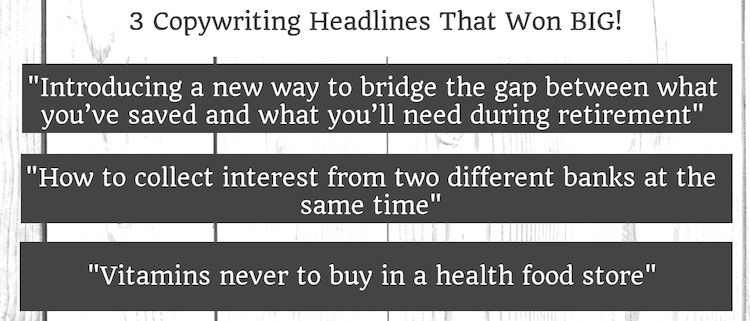

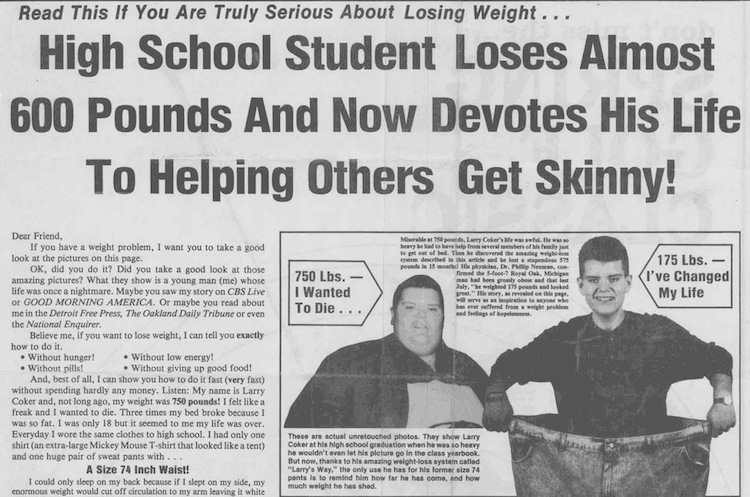
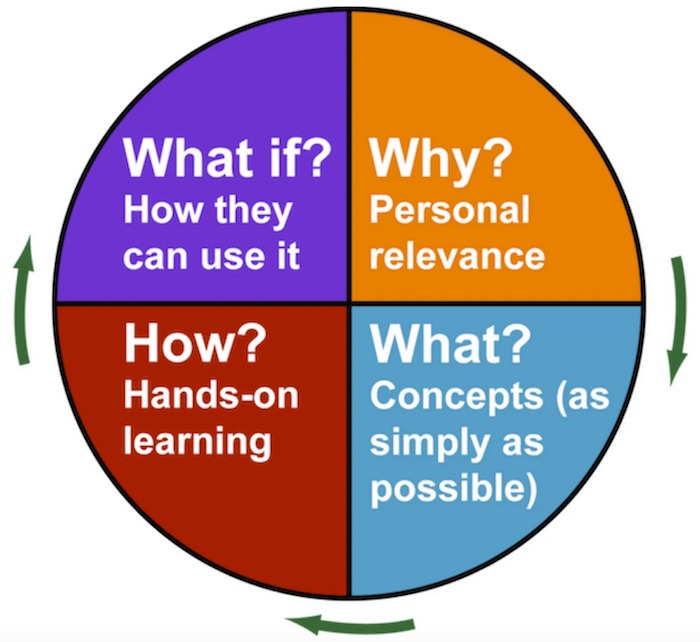



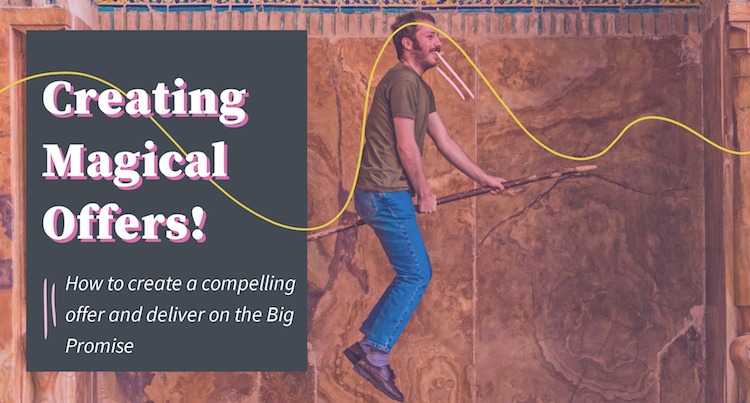
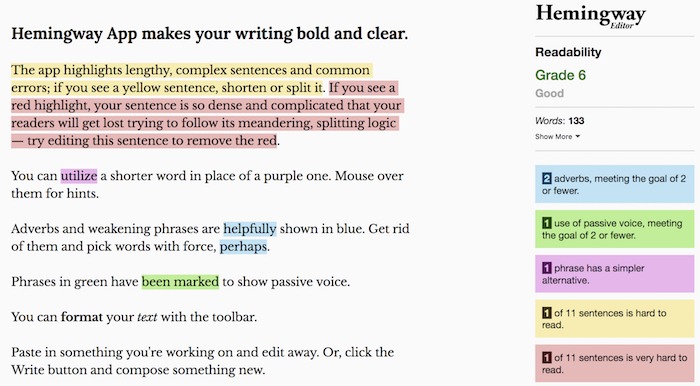

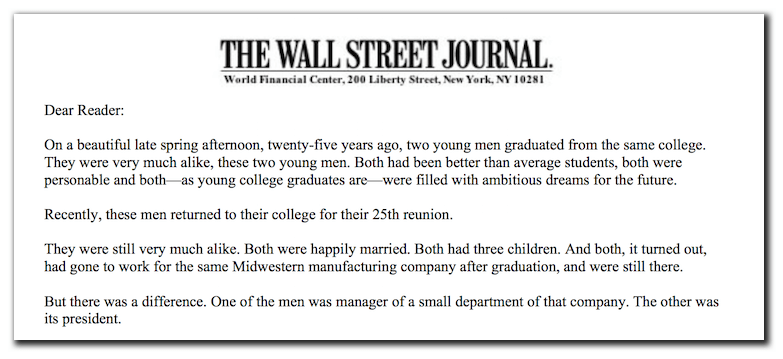
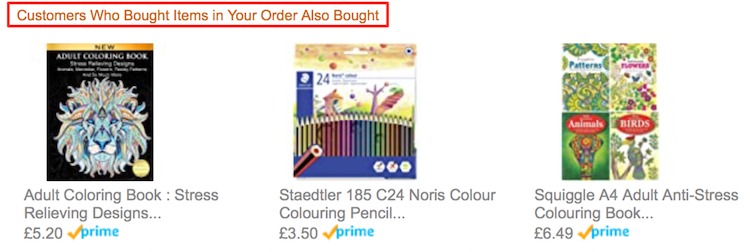
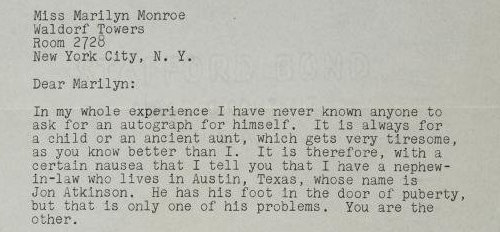
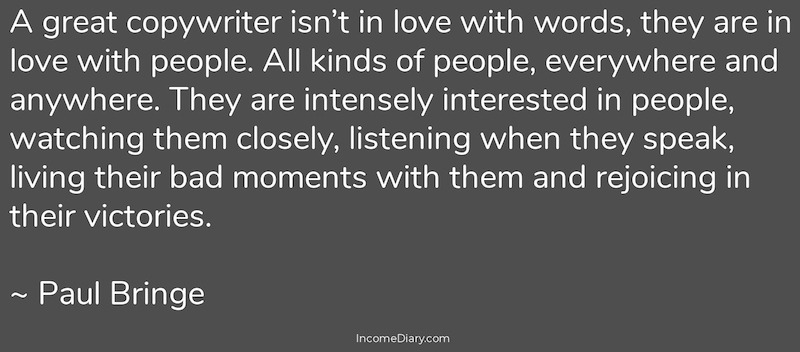
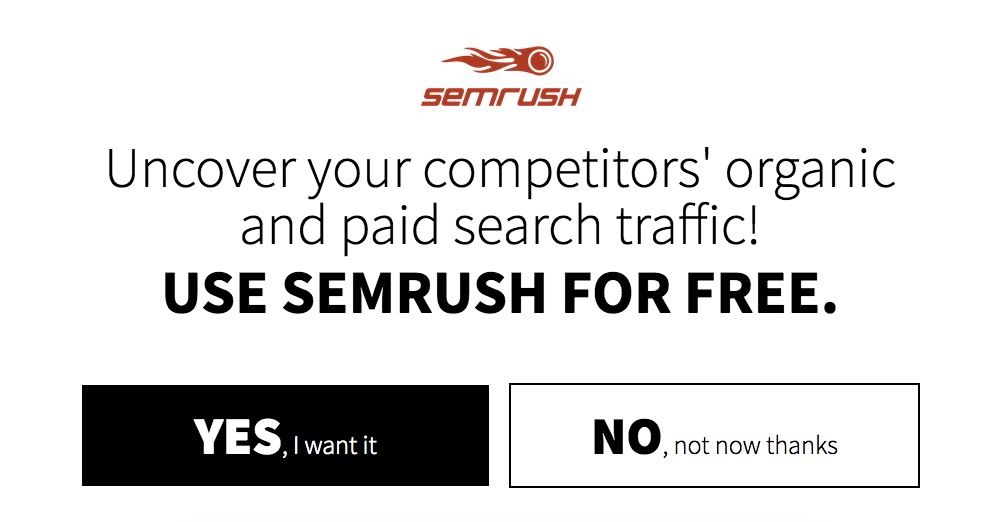



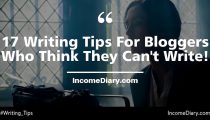
![New WordPress Install – 20 Things You Must Do [Checklist] New WordPress Install – 20 Things You Must Do [Checklist]](https://eadn-wc04-1126528.nxedge.io/wp-content/uploads/2016/09/new-wordpress-install-2016-210x120.jpg)
